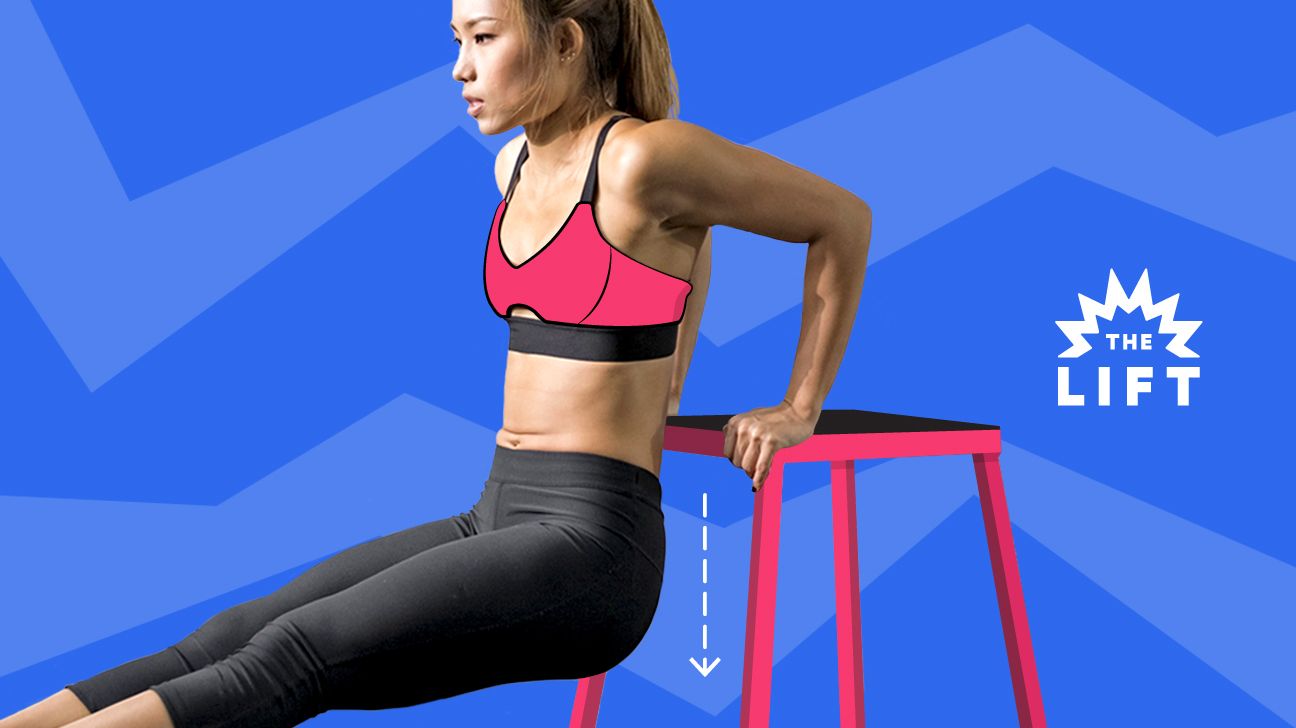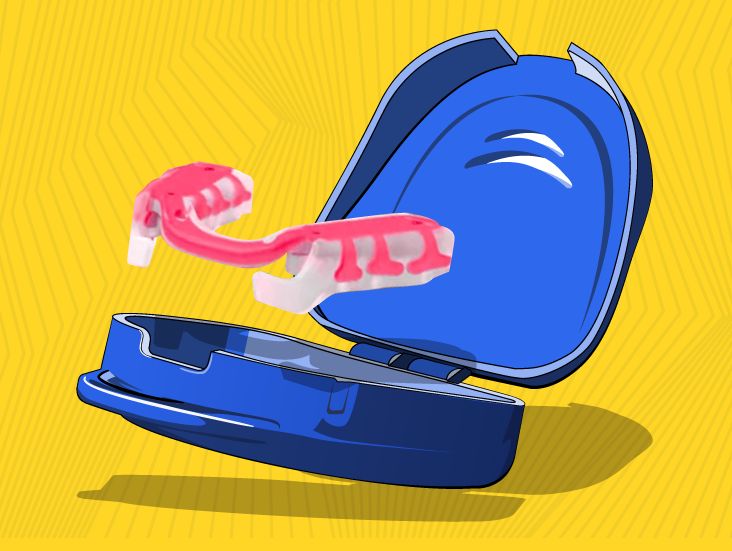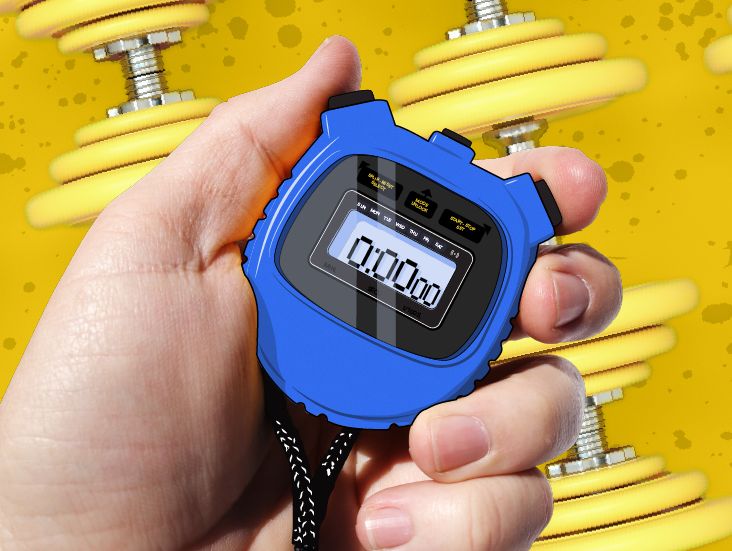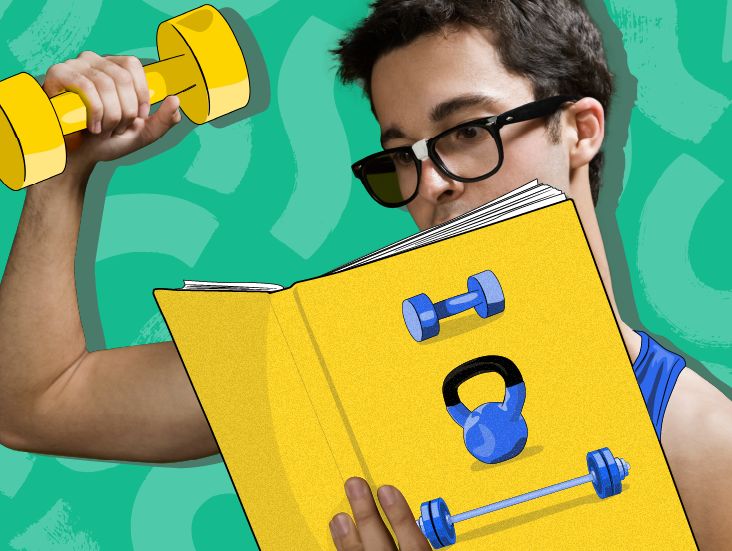
There are dips for chips and dips for under lips. And also: dips for triceps. These just happen to be an upper-body exercise that should be added to your training toolbox, stat — no matter your fitness level.
Sometimes called bench dips, chair dips, box dips, bar dips, machine dips, or ring dips, triceps dips are basically inverse push-ups. You position your body belly-up and bend your elbows to hit your triceps, pecs, delts, and core.
How to do a basic triceps dip
- Sit on a bench, box, ledge, chair, or step.
- Grip the front edge of the platform with hands just outside your hips, with fingers facing down.
- Lift yourself up so your bum is hovering over the edge of the platform.
- Step out so your legs are mostly straight. Then, think about screwing your little toe into the floor to engage quads and glutes.
- Tighten your midline by “hiding” your ribs from the ceiling, pull shoulders down away from ears, and lock your arms.
- Inhale as you lower toward the floor, bending elbows straight back. Looking straight ahead, continue lowering until your biceps and forearm form a 90-degree angle (or as soon as you feel a little pull in your pecs or shoulders — whichever comes first).
- Keeping midline tight, exhale as you push yourself back up to return to the starting position.
The benefits of doing triceps dips boil down to this: They tax and strengthen your triceps, pecs, and core a tremendous amount.
And according to fitness pros, strong upper arms, chest, and core can do the following:
Improve sports performance
Your body relies on your triceps and chest whenever there’s a push movement, and almost every sport has some pushing component.
Physical therapist Grayson Wickham, founder of Movement Vault, explains, “In basketball or volleyball you push the ball into the net. In rugby and soccer you push the ball during line-out or throw-in, respectively.”
But it’s not just “pushing sports” that benefit from triceps dips. Wickham points out that the exercise also works your core: “The core muscles help send power to our other muscles, including your arms and legs. So, by strengthening your core, tricep dips can make you a better frisbee player, runner, CrossFitter, football player, dancer, and so on.”
Reduce risk of injury
“The stronger you are anywhere, the more resilient and less injury-prone you’ll be during fluke accidents,” Wickham says. “And having strong triceps and pecs in general helps support the health of your elbow and shoulder joints.”
Say you take a misstep while you’re on a walk. If you have a solid core (which triceps dips can help build!), you’ll be more likely to stabilize your bod before hitting pavement.
Increase stability
Stability comes in clutch during literally everything, including when you’re putting away groceries, throwing a ball, walking down the street, or driving your car.
Boost metabolism
Metabolism is science-speak for how quickly your body uses up energy (read: calories). As a general rule, the greater your muscle mass, the greater your metabolism.
Because triceps dips build muscle, they can help boost your metabolism. And while this isn’t (and shouldn’t be) a goal for everyone, a metabolic boost can result in increased weight loss.
Ramp up your other strength numbers
Hey, gym rats, have you hit a bench press or push press plateau? Do dips.
“Doing dips is a great way to improve your numbers in push-ups, bench press, and other push exercises,” says CJ Hammond, XPS certified personal trainer with RSP Nutrition.
Another perk of triceps dips is that they are v-e-r-y scalable.
How to make dips easier
“Simply changing the position of your legs can affect how hard or easy the movement is,” says Wickham. “The further out in front your feet are, the further from your center of gravity they are, the harder the movement will be. The closer your feet are to your midsection, the easier the movement will be.”
So, if the movement is feeling trickier than it needs to be, walk your feet in!
Just don’t walk your feet so close to your bum that your calf and quad make less than a 90-degree angle. Doing dips from that position will strain your knee and ankle joints more than necessary.
“If you’re unable to do tricep dips with your knees at a 90-degree angle, try doing a triceps push-up on a wall,” suggests Hammond. (ICYDK: A triceps push-up is simply a regular wall push-up, but with your hands closer together.)
Once you can comfortably do 10 triceps wall push-ups with good form, Hammond recommends progressing to 20- to 30-second isometric triceps dip holds. That means lowering to the bottom of your dip and then just hanging out.
At this point, you likely *won’t* be able to push yourself back to the starting position — and that’s OK! Just plop your bum down, rest a minute, and repeat.
Isometric holds lead to a ton of time under tension, which can help you progress more quickly to full-on dips.
Isometric benefits
More time under tension = greater muscle breakdown = greater muscle growth post-recovery
How to make dips harder
Have you been doing dips with your legs completely straight and you’re still looking for a challenge? Wickham suggests returning to the bent-leg position and doing dips with a weight plate on your legs.
If you’ve got access to a dip machine, dip bars, or rings, you can also use those. They allow for a greater range of movement, which increases the intensity.
Here’s how you can maintain good form so your dips don’t slip.
Keep your neck neutral
“A super common mistake folks make is their neck position gets wacky as they descend into the dip,” says Wickham.
Now, are the odds high that you herniate a disc or sprain your neck doing this?
“No,” he says, “but why put more strain on your neck muscles than is necessary?” Fair point.
As you bend your elbows back, think about pulling your shoulders away from your ears.
Speaking of which…
Solidify your shoulders
“Actively retracting your shoulder blades and squeezing them together helps your shoulders from rounding forward and putting you lower back in a compromised position,” Wickham says.
Engage your core
Ahh, another back-saving cue.
“[Engaging your core] will protect your spine and allow you to maintain dynamic stability throughout the movement,” says Hammond.
*Don’t* go past your mobility
That sounds confusing, but it means this: Form > Everything.
Don’t descend lower into the dip than you can go with good form.
“If you have really tight chest and shoulders, stop before you feel a pull on the muscles or your form deteriorates,” says Wickham. “Going outside of your personal range of motion is going to force other muscles to compensate and do jobs they shouldn’t be doing.”
Welp, there you have it.
*Silentó voice* Now watch you dip, dip (kill it!), watch you gain gain (OK!).
Gabrielle Kassel (she/her) is a queer sex educator and wellness journalist who is committed to helping people feel the best they can in their bodies. In addition to Healthline, her work has appeared in publications such as Shape, Cosmopolitan, Well+Good, Health, Self, Women’s Health, Greatist, and more! In her free time, Gabrielle can be found coaching CrossFit, reviewing pleasure products, hiking with her border collie, or recording episodes of the podcast she co-hosts called Bad In Bed. Follow her on Instagram @Gabriellekassel.





